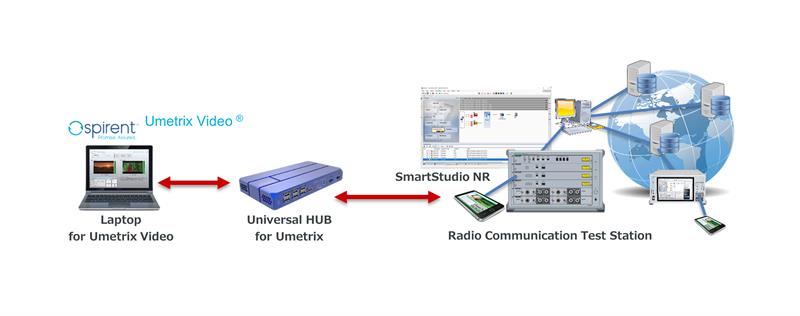Developed in partnership with Spirent Communications it leverages the strengths of Anritsu’s SmartStudio NR Network Simulator and Spirent’s Umetrix Video software, providing what is said to be the world’s first integrated 5G video quality system.
The accelerating shift from 4G to 5G mobile communications as well as increasing adoption of teleworking are driving increased viewing of streamed video content as well as growing use of online meeting tools. As a result, video-quality has become a key factor influencing user’s’ choice of 5G mobile operator and smartphone brands. As a result, mobile operators, 5G device vendors, and content providers have needed a solution for evaluating the video quality of 5G devices.
This new solution integrates Anritsu’s Radio Communication Test Station MT8000A and SmartStudio NR (SSNR) control software with Spirent’s Umetrix Video system for evaluating video quality. The MT8000A operates as a 5G Call Box by simulating a 5G base station and core network using a state-machine-based GUI. Users can simulate a full range of 5G network conditions including both Standalone (SA) and Non-Standalone (NSA) topologies at FR1 or FR2 frequencies, all without needing to create protocol scripts. Testing of throughput, mobility, VoNR, EPS-Fallback, SMS, CMAS, CDRX, and other functions can be easily performed using SSNR’s GUI.

SSNR offers flexible network settings as well as the simple reproduction of a live 5G network environment which helps to facilitate easier and more effective analysis of video quality. It is also able to support many APIs helping to accelerate the configuration of customer’s automation environments.
Spirent’s Umetrix Video evaluation system measures the receive-side quality of streamed video contents by scoring QoE (Quality of Experience) using Video Mean Opinion Scoring (V-MOS) from only receive-side. It supports video-streaming services and video-content analysis by scoring the original video without prior display, facilitating faster and lower-cost repeatable design tests, regression tests, and competitor benchmarking.













